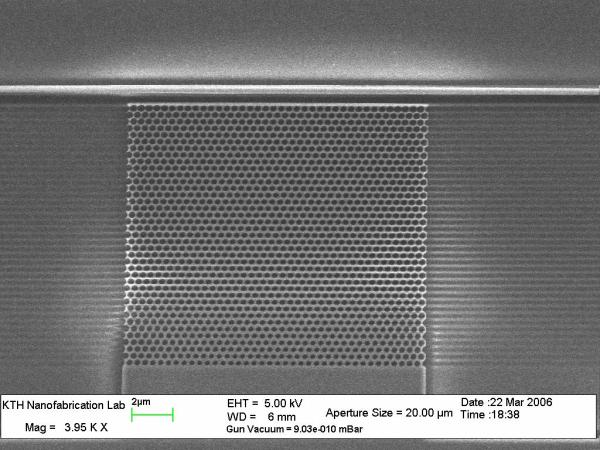Frontpanel controls, from left to right:
|
Responsible: Anders Liljeborg
This is used to cover non-conducting samples with a conducting carbon layer for use inside a Scanning Electron Microscope (SEM).
The vacuum chamber, glass cylinder to the left, is evacuated by a rotary
oil pump located in the service room.
The sample to be covered is placed on the small table underneath the
carbon tips. The height of the table can be adjusted to change the thickness
of the coating.
The top of the vacuum chamber can be opened and lifted backwards. The glass
cylinder can be removed to more easily access the sample table and adjust
its height.
Care should be taken when removing the glass cylinder, its top and bottom
edges make a vacuum seal with O-rings. If edges are chipped or damaged
vacuum cannot be achieved.
More detailed practices using holder to avoid carbon particles
SEM images, carbon coated sample
|
| Press the start-button and rather decidedly and quickly turn up the current control knob to about 100 A. The carbon pins should start to glow. Do not turn up the current too slowly, it causes the carbon tips to sinter and may not start to glow. The current is not quite stable and may need some after adjustment. The current to be used for coating is dependent on the desired coating thickness and quality. |
Detailed practices
Never run a continuous deposition for more than five - six seconds. There
is an internal overheating/overcurrent protection that shuts off after that.
To get the coater working again you have to shut off, vent and start again.
It is recommended to always use pulse mode.
Deposition rate is about 1.5 - 2 nm/s when pulsing in one-second intervals. This rate depends of distance between sample table and source.
It is recommended to always use the holder described in document
linked to below.
More detailed practices using holder to avoid
carbon particles
The carbon rods emits larger particles which falls down. Putting your
sample above the carbon rods alleviates this problem.
SEM images of carbon coated sample
Images of a 400 nm silicon wire coupled to a photonic crystal.
Carbon coater: Six pulses of one second each.
Enough to avoid charging effects during SEM imaging.
Images courtesy of Ziyang Zhang, IMIT, KTH-Kista.
